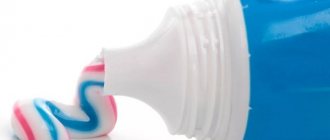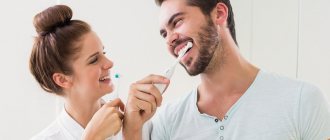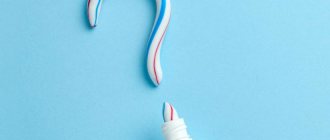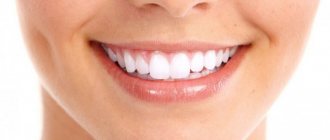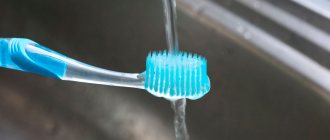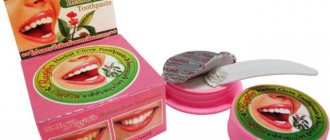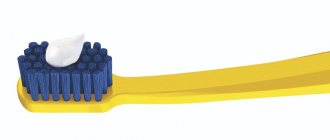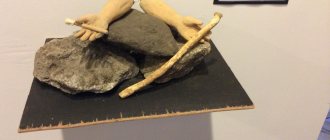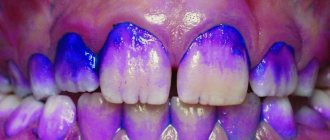Normally, a person has 32 teeth. By the age of thirteen, we acquire the entire set: 8 incisors, 4 canines, 8 premolars and 8-12 molars, but the problems are just beginning. People smoke, eat chocolate and cakes, drink soda and skip dentist appointments. But most importantly, many simply do not know how to brush their teeth properly.
Which brush is better: regular or electric? What should be in the paste? Do I need dental floss and irrigator? How to hold a toothbrush? Reminder answers your top questions about oral hygiene.
What should be in toothpaste?
The main thing is fluorides
, which reduce the risk of caries and strengthen tooth enamel. The paste may also contain active ingredients to reduce tooth sensitivity, against germs and for whitening. But it is not they that cause the most controversy, but the abrasive - particles that physically help remove plaque and stains from teeth and polish the enamel.
Abrasive particles should not be too large, hard or sharp, so as not to scratch teeth and wear out dentin and enamel. Sand, for example, or crushed cuttlefish bones, which were used in pastes before the 1900s, are poor abrasives. Therefore, now there is a standard for abrasiveness - < 250 RDA
(relative dentin abrasivity). Sometimes it is recommended to choose toothpastes with a lower RDA because they are supposedly safer and wear less on teeth. In fact, there is no evidence for this recommendation. For example, the American Dental Association (ADA), which developed the RDA scale, advises choosing any paste with an abrasiveness below 250 RDA. Actually, it’s difficult to find another one on the market now.
How to choose a regular toothbrush?
Make sure the brush is soft
: This is the main thing. If you brush your teeth twice a day and do it correctly, then the soft bristles will cope with plaque; you don’t need extra hardness (it’s actually soft too). The softness also minimizes the risk of injury to teeth and gums.
The head of the toothbrush should ideally be small, only 2-2.5 cm in length
.
The neck is flexible
. But this rule is not as universal as the softness of the bristles. The main thing is that you feel comfortable holding the brush and brushing your teeth with it.
The design of the bristles can be different: with a straight cut (the most common), crossed (criss-cross system), zigzag, interspersed with plastic bristles. There is modest evidence that crossed bristles are slightly better at removing plaque. The studies did not compare plastic bristles with regular bristles. But experts worry that both they and the criss-cross system can harm gums and enamel if you apply too much pressure. Perhaps the best choice is classic straight cut bristles
.
Comparison table of characteristics
For a visual comparison of the presented models of ultrasonic brushes, we present this table.
| Model | Manufacturer | Oscillation frequency (MHz) | Number of nozzles (pcs) | Price, rub) |
| Emmi-dent 6 Ultrasound Toothbrush | Germany | 1,6 | 3 | from 12,500 to 13,000 |
| Megasonex m8 | China | 1,6 | 1 | from 9,000 to 10,000 |
| Asahi Irica AU300D | Japan | 1,6 | 3 | from 9,500 to 10,500 |
| Donfeel HSD-005 | China/Taiwan | 1,7 | 3 | from 2,750 to 3,750 |
| AquaPick AQ-110 | Korea | 1,5 | 3 | from 5,500 to 6,500 |
| Kenwell RST2062 | China | 1,5 | 3 | from 2,458 to 3,277 |
| Oral-B Pulsonic Slim | USA | 1,7 | 1 | from 5,500 to 6,500 |
What to do if you don’t have a brush and toothpaste at hand?
Then use fluoride mouthwash
. It won’t replace a full cleaning, but it will give you a feeling of freshness and remove at least some of the bacteria.
In general, the rinse is a useful addition to regular teeth brushing: it reaches places that are difficult to clean with a brush and toothpaste. Cosmetic mouthwash (the regular kind found on the supermarket shelf) can temporarily remove bad breath. Therapeutic (available over the counter) can kill bacteria, relieve gum disease (gingivitis), and control plaque and tooth decay. It is better to use it, but select it together with your dentist.
Pay attention to the Sonic Friendly mark
Some pastes may be marked Sonic Friendly as a hint. This means the paste is suitable for use in conjunction with an electric toothbrush. The icon does not determine the quality of the paste, but only gives a hint.
CURAPROX Enzycal 950 toothpaste
Toothpaste CURAPROX PerioPlus SUPPORT chx 0.09%
Megasonex toothpaste
Toothpaste ROCS PRO Electro&Whitening
How about cleaning your tongue? If yes, then with what?
Bacteria that cause tooth decay also multiply on the tongue. But there is no evidence that everyone needs to clean it. A study of 251 subjects found that brushing the tongue helps get rid of bad breath - halitosis.
. But there is no exact data on how often and for how long to clean your tongue, what technique to use.
Manufacturers offer special tongue scrapers
, which do not cause a gag reflex, and recommend brushing your tongue twice a day after brushing your teeth. You should start from the root of the tongue, where most bacteria accumulate. Using gentle pressure, you first need to move from the root of the tongue to its tip, and then treat the side surface, right and left.
Dentist reviews
Today, brushing teeth using sound vibrations at home is available to almost every person.
Unfortunately, I cannot call the invention of the ultrasonic brush an advantage of technological progress.
Indeed, with the advent of electrical devices for oral care, the number of patients complaining of constant pain in the teeth and the development of inflammatory processes has increased.
I do not recommend using such brushes on an ongoing basis.
Dental devices with ultrasonic action have a beneficial effect on the condition of teeth and gums, thoroughly cleaning the oral cavity from pathogenic bacteria, food debris between teeth and plaque.
I believe that fears about the negative impact of ultrasound on the body are groundless, since the power of ultrasonic brushes is low.
It allows waves to penetrate a layer of 4-5 mm - this is enough to safely remove contaminants.
Should I floss?
The question is controversial. The brush removes only 60% of the dirt: it cannot reach the interdental spaces, and a lot of excess remains in them. Therefore, a tool for cleaning interdental spaces is definitely needed.
But does it have to be dental floss? Some experts believe the method is outdated, the evidence for its effectiveness is inconclusive, and flossing can damage gums and teeth if used incorrectly. Interdental brushes can be used instead of dental floss.
or
water irrigator
.
American dentists still recommend dental floss. You should floss once a day, before or after brushing your teeth. Keep in mind that if you're just starting to floss, it may be uncomfortable in the first week and your gums may bleed. This happens because you injure the overgrown gum with the floss. With proper oral hygiene, this tissue is absent, so the discomfort will soon subside.
Tips for choosing
When choosing an ultrasonic brush, pay attention to the following criteria:
- Efficiency. How well the device cleans dentures or other items from dirt. When purchasing in a store, you can always ask a consultant to check the product that you are going to use in the future. Is your purchase made through an online store? – rely on consumer reviews.
- Ease of use. Hold the device in your hand. It shouldn’t be too big, if you can easily grasp the handle and don’t experience discomfort, buy it. But if you can’t completely grasp the handle of the toothbrush, put it back on the shelf. When purchasing a device in an online store, check the diameter of the handle with the seller.
- Functionality. Here we are talking about various functions, for example, the presence of a battery charge indicator, cleaning modes or the presence of additional attachments. Many consumers pay attention to the presence of a teeth brushing timer - a convenient thing if you are always in a hurry.
Does everyone need an irrigator?
First of all, it is needed by those who find it difficult to floss: people with orthodontic structures such as braces and implants, those who have not had their wisdom teeth removed and the space between the teeth is too small to clean with dental floss, and people with disabilities. An irrigator will also come in handy if your gums are sensitive and dental floss causes them to bleed.
Some data say that floss cleans the interdental spaces better, others say that an irrigator does. So the choice between a thread and an irrigator is more a matter of convenience
. You can even use both: this is the most effective way to remove plaque between teeth.
Should you brush your teeth before or after breakfast?
Better after: then the less food debris, bacteria and saliva on the enamel, the lower the risk of developing oral diseases. But you shouldn’t brush your teeth immediately after breakfast (or any other meal). First you need to rinse your mouth with water, wait an hour (or at least 30 minutes) - and only then start cleaning. Especially if you drank coffee or ate grapefruit: acidic food makes the enamel more vulnerable, and cleaning can harm it. If you don’t have time to take a long break between breakfast and oral hygiene (you need to run to work, for example), brush your teeth before breakfast.
Contraindications
Remember! Some patients will still have to refuse to undergo the procedure of cleansing the oral cavity with such a device.
The use of the device is contraindicated in the presence of certain pathologies:
- diabetes ; _
- oncological diseases;
- periodontitis;
- white spots on enamel;
- severe bleeding gums .
It is also not recommended to use the electric device for people with installed pacemakers, fillings, pregnant or lactating women.
How to brush your teeth with a regular brush?
Hold the brush at a 45° angle to the gum line
. Bacteria and plaque usually hide in the sulcus of the gums. To get rid of them more effectively, the brush head should be slightly tilted towards the furrow. This gives an angle of 45°.
Brush your teeth using short, circular, back-and-forth sweeping movements.
. Not moving up and down - this is a common mistake. Don't press too hard on your teeth; this won't make them cleaner, but it will increase the risk of your teeth becoming hypersensitive and your gums bleeding. Here is an example video with the correct technique.
First, pay attention to the outer surface of the teeth, then to the inner, then to the chewing surfaces. To thoroughly clean the inner surface of the front teeth (a place that is difficult to reach, so do it separately, after chewing surfaces), change the angle and movements: hold the brush vertically and make forward-down movements - in this case they will be correct. Finally, clean your tongue. Even if there is no special scraper, the brush will cope with this quite well.
Sequence of application
Remember! When using a sonic device for cleaning, you should adhere to several rules for the operation and sequence of use of the product:
- To quickly get used to the device, during the first two weeks after purchasing it, gradually increase the speed of movement of the villi .
- For the first 30 seconds, use circular movements to clean the front teeth located on the lower jaw, then on the upper jaw. After this, you need to brush the back and forth teeth with a back-and-forth motion.
- Carry out the procedure for no more than three minutes - this is enough to thoroughly clean the oral cavity.
- Change removable attachments every 3 months to prevent the spread of bacterial flora.
How to brush your teeth with an electronic brush?
As with a manual toothbrush, you should hold it at a 45° angle. But the steps are much simpler: you just need to move from tooth to tooth
. First - along the front surfaces, then - along the back and chewing surfaces, and finally - brush along the gum line and clean your tongue. You need to move the brush slowly: each tooth should have a few seconds of brushing. In total, the procedure takes the same amount of time as a manual one: two minutes. Your electric toothbrush may even have a timer set for this time.
Are they suitable for children?
Ultrasonic toothbrush models are ideal for children .
You should know! With their help, the baby will be able to thoroughly clean the teeth and perform a light massage of the gums, which is necessary to increase the stability of periodontal tissues and stimulate metabolic processes.
Children can start using the device as early as five years of age under adult supervision.
All models of toothbrushes intended for children are designed taking into account the development of children's teeth. Therefore, children should not use adult hygiene devices.
How to use dental floss?
Take 45 cm of dental floss. Wrap most of it around your fingers, leaving 5 cm for cleaning. Hold the floss between your thumb and forefinger and move it up and down
: down - on one side of the tooth, up - on the other.
Be gentle and don't push too hard. Let the movements be light and not sharp, otherwise you may accidentally injure your gums. Move from tooth to tooth, using a new, clean section of floss each time. To finish flossing and pulling it out, use the same up-and-down motion. Here is a video demonstrating the technique.
